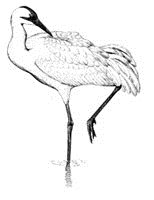North American Crane Working Group

Proceedings of the North American Crane Workshop
Date of this Version
2023
Document Type
Article
Citation
Proceedings of the North American Crane Workshop (2023) 16: 210–217
Abstract
The dietary uptake of lead (Pb) and mercury (Hg) risks limiting population growth of reintroduced whooping cranes (Grus americana) in the Eastern Migratory Population (EMP). We evaluated these potentially toxic trace elements in blood and marginal covert feathers of wild-hatched juvenile and adult cranes sampled in the Wisconsin breeding range between 2016 and 2023. Samples were obtained at live capture events, and analyzed using inductively coupled plasma/mass spectrometry for Pb and Total Hg (THg). Blood Pb concentrations from adults were greater than those of juveniles, but feather Pb concentrations were similar between age classes. Blood and feather THg concentrations were both similar among juveniles and adults. No differences in Pb or THg were found between male and female cranes in either sample type. Concentrations of each element in blood and feathers taken from the same individual (n = 14) were not correlated. Overall, the concentrations of Pb and THg observed in samples were lower than or within ranges reported from various other bird species. Our study suggests EMP whooping cranes are at low risk for exposure to Pb or Hg at the population level, and that blood sampling may be a more effective monitoring method for both elements over use of feathers without further study. Acute exposures and poisoning, especially due to Pb ingestion, may remain an occasional cause of individual mortality in the EMP.


Comments
Copyright 2025, North American Crane Working Group. Used by permission